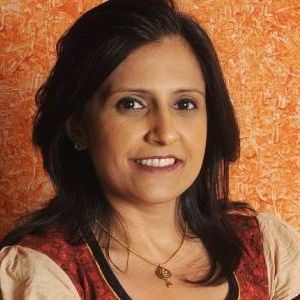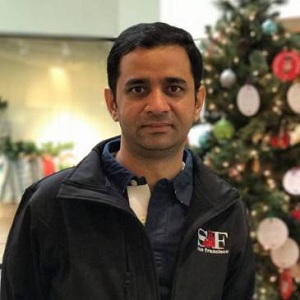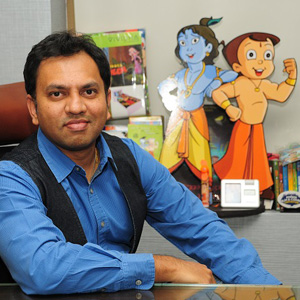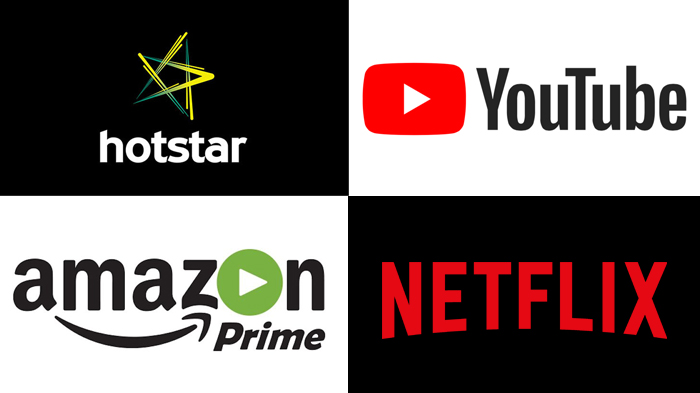Indian animation is at an inflection point. From being outsourced service providers to content creators and intellectual property owners, the Indian animation industry has gone through quite a metamorphosis.
With a surfeit of channels like Disney, Pogo, Cartoon Network, Nick, Discovery Kids and Sony YAY! catering to more than 200 million kids, the kids’ genre has seen a conspicuous rise in viewership over the years.
Big players in the Indian animation industry, like Green Gold Animation, Cosmos-Maya, DQ Entertainment, Toonz Animation and others are increasingly gaining recognition globally, thanks to their continuous efforts to penetrate international territories with their original IPs, or acquisition of local companies, or setting up outposts in those regions.
“The advantage for India is that we have so many kids’ channels
and OTT players looking at us.”
Amidst the glory and success, the sector has had its own share of ups and downs. Animation enthusiasts and aficionados continue to pose questions like: Can the Indian animation sector enter the mainstream of animated content globally, just like any series or movie emerging from the US, Japan, Canada or France? Additionally, when will the studios, broadcasters, and OTT platforms expand the animation landscape from a purely kids’ category to a diversified mix of family-oriented animated content or a genre that also caters to older audiences?

Shares Nickelodeon programming head Annu Sikka: “We started our journey in 2010 with local content. And we have come a long way exploring different genres, formats, target groups. However, we still have many more miles to go in terms of genres. In the next few years, I think the time will come when animation will no longer be perceived in India as a medium for kids because I think a generation that has grown up on animation is ready for adult animation.”
The generation she is referring to is Gen Z that consumed a diet of Indian and western animated content in the nineties. They were kids then; they are in their twenties now and have witnessed a paradigm shift in the zeitgeist. Having tasted kids animation, observers believe that they could have an appetite for adult animation as well, which spells opportunity for those in the sector.
“The only way we can go up the value chain is when we start telling our stories. With the belief, that our stories are strong enough.”
Sikka goes a little further. Says she: “I think animation as a genre is something that is ready now to be consumed not just by kids, but it should be presented in a manner so that families and teenagers can also consume it.” While animation content has progressed by leaps and bounds from 2D flash and cell animation to 3D CGI and a larger share of kids’ eyeballs, revenues and the bottomlines have not kept pace.

Sony YAY! Programming head Ronojoy Chakraborty says the advertisers will have to step up their investments in the kids: “Animation as an industry is growing at a healthy pace of 10 per cent but producers depend on broadcasters who in turn rely on advertisers for financing. The kids’ category is one-fourth the size of the entire general entertainment channel category and it only gets one-tenth of the overall advertising revenue. Once the monetary aspect improves, more animation programs will be commissioned including a variety of programs which is eventually going to help the entire industry. We are ultimately appealing to the citizens of the future.”
Reliance Animation COO Tejonidhi Bhandare gives another perspective. Shares he: “A lot of things are opening up for animation. When we talk about animation there are three separate categories that we talked about one is a preschool, then we have a six to nine years category and then there is a slightly older age-group that has actually not been tapped in India. Above all, we have family-oriented animation. We need to focus on the talent and how we build up that talent. Talent and pre-production aspects are really critical for us right now.”

Creating a global IP
Over the past decade, India has given rise to a fleet of original IPS; out of which many have managed to strike a chord with the global audience yet media observers feel that’s merely the tip of the iceberg. Notwithstanding the enormous success, there is still a whole lot of ground to cover and inputs to absorb in the animation space before we can conceive many IPs capable of resonating beyond our borders.
How do we tell Indian stories that appeal
to international audiences?
Sharing insights about the ways in which Indian animators can appeal to overseas viewers, DQ Animation COO Manoj Mishra says: “The demands vary from country to country. As far as the US is concerned, it’s more of a demand for original programming which is coming in. As far as Europe is concerned, it’s all the classic shows that play an important role. If companies are not getting the desired ratings and monetisation domestically, you’ve got to go after the audience that goes beyond India.”

Having paved the way for domestic content with India’s most popular homegrown IP Chota Bheem, Green Gold Animation has championed the IP revolution and made massive waves worldwide. Especially with its recent benchmark IP Mighty Little Bheem that has been rocking on Netflix at number one in the preschool category.
Says Green Gold founder Rajeev Chilaka: “What I would love to see is more successful studios. As someone who has been running a studio, for the last eighteen years or so, I realise their pain. In the sense, at first, you have to deal with the cash-flow problem which every studio has. On the other hand, we have challenges like having to constantly keep on upgrading. Every year, the hardware that releases is far better than before. We also have software upgrades. Pretty much, by the time you do all this, you know, you can’t pay salaries. Then there are new technologies being invented. New creative ideas are coming through. We will make content for teenagers to sixty-year-olds to young adults; all that will happen, Yes, but most importantly, we need more successful studios.”

Highlighting the problems that afflict the animation scene, he says, “Another problem that we want to eradicate is that we need more young guys coming in who are as passionate as we saw in the batches of 2005-2010. We need more young blood coming into this industry. The advantage for India is that we have so many kids’ channels and OTT players looking at us. We have the opportunity to reach out to the Indian diaspora. I think we need to do global shows.”
Co-productions
The world is steadily shrinking into a global village and co-productions treaties are testaments to that. Digital platforms have played a key role in facilitating the reach of content to different parts of the globe. Cosmos Maya’s content has aired in more than 150 countries, reaching almost all corners of the world.

Says Cosmos Maya senior veep revenue & corporate Strategy Devadutta Potnis, “We produce to the tune of 50 half hours of animation per month. And the fact that India is growing so much on all fronts, digital is coming up, broadcasters are also growing, there are many opportunities. So that’s really a great area for us to be there in. We just finalised nine new shows in the domestic market. A couple of months before that.. we had signed off three European co-production deals. As far as co-productions are concerned, there are virtually 12 new shows going on at the moment.”
Addressing the regnant need to grow up the value chain in the co-production space, DQ Animation COO Manoj Mishra expresses: “What I feel very strongly is that we don’t need to be the minority co-production partner on international shows; we need to be the lead producer. We need to have stories coming out. We need to have those partners getting tied up from Europe or US or other parts and we need to have those anchor broadcasters from the international community. And we have been successfully doing it. On our shows like Jungle book Robin Hood, Peter Pan or The New Sammy Show which we just released in China on CCTV and it’s the number one there at this moment.”
Reflecting on the subject of creating globally-relatable content, Sikka points out, “The only way we can go up the value chain is when we start telling our stories. With the belief, that our stories are strong enough.”
Demand for Government Subsidies
While the governments in the west have facilitated the cause of animation with an enormous amount of subsidies, the same can’t be said about India. Speaking about the importance of government subsidies in the animation sphere Potnis says, “In the last couple of years I have had conversations with studios from Ireland, Canada and Australia. And just to kind of compile the kind of support that they get by way of subsidy amount; the tune of the volume that they get is like 30 to 40 per cent of the budget. And we stand nowhere in that sense. What these international producers find fascinating is the volumes that we deliver because one has to play on the strengths. We don’t have the government support, as evolved an audience and spending power. One thing that co-productions have helped us do is scale up on the quality front. I think the greatest story ever is an Indian story. It has all the masala. In the era of OTT platforms, there are many opportunities.”

While roaring successes like Pakdam Pakdai, Jungle Book and Mighty Little Bheem have managed to capture imaginations across the globe, we are yet to ride the international wave in the larger scheme of things. Indian storytellers are beginning to get a firmer grasp over global sensibilities; traces of which can be found in the OTT specials and co-production deals that are being increasingly stitched in service of richer and resonant animated content streamed for global consumption.
Given the rapid digitalisation, efficient workforce, cheap data rates and cost-effective production environment, we are sure the industry will scale greater heights in the years to come!
